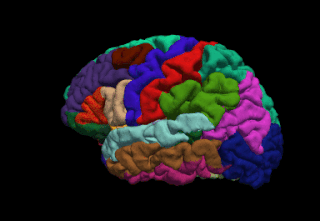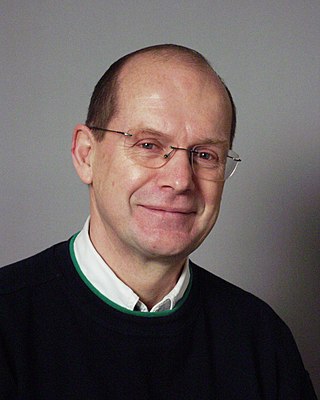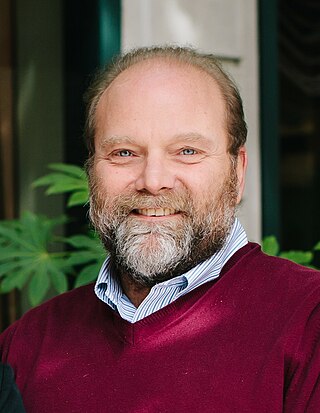
Magnetic resonance imaging (MRI) is a medical imaging technique used in radiology to form pictures of the anatomy and the physiological processes inside the body. MRI scanners use strong magnetic fields, magnetic field gradients, and radio waves to generate images of the organs in the body. MRI does not involve X-rays or the use of ionizing radiation, which distinguishes it from computed tomography (CT) and positron emission tomography (PET) scans. MRI is a medical application of nuclear magnetic resonance (NMR) which can also be used for imaging in other NMR applications, such as NMR spectroscopy.

Neuroimaging is the use of quantitative (computational) techniques to study the structure and function of the central nervous system, developed as an objective way of scientifically studying the healthy human brain in a non-invasive manner. Increasingly it is also being used for quantitative research studies of brain disease and psychiatric illness. Neuroimaging is highly multidisciplinary involving neuroscience, computer science, psychology and statistics, and is not a medical specialty. Neuroimaging is sometimes confused with neuroradiology.

FreeSurfer is brain imaging software originally developed by Bruce Fischl, Anders Dale, Martin Sereno, and Doug Greve. Development and maintenance of FreeSurfer is now the primary responsibility of the Laboratory for Computational Neuroimaging at the Athinoula A. Martinos Center for Biomedical Imaging. FreeSurfer contains a set of programs with a common focus of analyzing magnetic resonance imaging (MRI) scans of brain tissue. It is an important tool in functional brain mapping and contains tools to conduct both volume based and surface based analysis. FreeSurfer includes tools for the reconstruction of topologically correct and geometrically accurate models of both the gray/white and pial surfaces, for measuring cortical thickness, surface area and folding, and for computing inter-subject registration based on the pattern of cortical folds.
Robert Turner is a British neuroscientist, physicist, and social anthropologist. He has been a director and professor at the Max Planck Institute for Human Cognitive and Brain Sciences in Leipzig, Germany, and is an internationally recognized expert in brain physics and magnetic resonance imaging (MRI). Coils inside every MRI scanner owe their shape to his ideas.
The Human Connectome Project (HCP) is a five-year project sponsored by sixteen components of the National Institutes of Health, split between two consortia of research institutions. The project was launched in July 2009 as the first of three Grand Challenges of the NIH's Blueprint for Neuroscience Research. On September 15, 2010, the NIH announced that it would award two grants: $30 million over five years to a consortium led by Washington University in St. Louis and the University of Minnesota, with strong contributions from University of Oxford (FMRIB) and $8.5 million over three years to a consortium led by Harvard University, Massachusetts General Hospital and the University of California Los Angeles.

Magnetic resonance imaging of the brain uses magnetic resonance imaging (MRI) to produce high-quality two- or three-dimensional images of the brain, brainstem, and cerebellum without ionizing radiation (X-rays) or radioactive tracers.
Mark Steven Cohen is an American neuroscientist and early pioneer of functional brain imaging using magnetic resonance imaging. He is a currently a professor of psychiatry, neurology, radiology, psychology, biomedical physics, and biomedical engineering at the Semel Institute for Neuroscience and Human Behavior and the Staglin Center for Cognitive Neuroscience. He is also a performing musician.
Arno Villringer is a Director at the Department of Neurology at the Max Planck Institute for Human Cognitive and Brain Sciences in Leipzig, Germany; Director of the Department of Cognitive Neurology at University of Leipzig Medical Center; and Academic Director of the Berlin School of Mind and Brain and the Mind&Brain Institute, Berlin. He holds a full professorship at University of Leipzig and an honorary professorship at Charité, Humboldt-Universität zu Berlin. From July 2022 to June 2025 he is the Chairperson of the Human Sciences Section of the Max Planck Society.

Resting state fMRI is a method of functional magnetic resonance imaging (fMRI) that is used in brain mapping to evaluate regional interactions that occur in a resting or task-negative state, when an explicit task is not being performed. A number of resting-state brain networks have been identified, one of which is the default mode network. These brain networks are observed through changes in blood flow in the brain which creates what is referred to as a blood-oxygen-level dependent (BOLD) signal that can be measured using fMRI.
The following outline is provided as an overview of and topical guide to brain mapping:

Wolfgang Grodd is a German neuroradiologist and professor emeritus of the University hospital at the University of Tübingen. He is known for his scientific works on the development and application of structural and functional magnetic resonance imaging in metabolic diseases, sensorimotor representation, language production, and cognitive processing, cerebellum, thalamus, and basal ganglia. Currently, Wolfgang Grodd is a research scientist at the Department of the High-Field MR at the Max Planck Institute for Biological Cybernetics.

Vince Daniel Calhoun is an American engineer and neuroscientist. He directs the Tri-institutional Center for Translational Research in Neuroimaging and Data Science (TReNDS), a partnership between Georgia State University, Georgia Institute of Technology, and Emory University, and holds faculty appointments at all three institutions. He was formerly the President of the Mind Research Network and a Distinguished Professor of Electrical and Computer Engineering at the University of New Mexico.

Irene Mary Carmel Tracey is Vice-Chancellor of the University of Oxford and former Warden of Merton College, Oxford. She is also Professor of Anaesthetic Neuroscience in the Nuffield Department of Clinical Neurosciences and formerly Pro-Vice-Chancellor at the University of Oxford. She is a co-founder of the Oxford Centre for Functional Magnetic Resonance Imaging of the Brain (FMRIB), now the Wellcome Centre for Integrative Neuroimaging. Her team’s research concerns the neuroscience of pain, specifically pain perception and analgesia as well as how anaesthetics produce altered states of consciousness. Her team uses multidisciplinary approaches including neuroimaging.
Heather Clare Whalley is a Scottish scientist. She is a Professor of Neuroscience and Mental Health neuroimaging at the Centre for Clinical Brain Sciences, University of Edinburgh, and is an affiliate member of the Centre for Genomic and Experimental Medicine at the University of Edinburgh. Her main focus of research is on the mechanisms underlying the development of major psychiatric disorders using the latest genomic and neuroimaging approaches.
Kathryn Emma Watkins is an experimental psychologist in the Wellcome Trust centre for integrative neuroimaging at the University of Oxford and a tutorial fellow at St Anne's College, Oxford. Her research investigates the brain processes that underlie speech, language and development.
John Mark Pauly is the Reid Weaver Dennis Professor of Engineering in the Department of Electrical Engineering at Stanford University. He is co-director of the Magnetic Resonance Systems Research Laboratory (MRSRL), which designs improved MRI techniques and equipment. He is Advisor to Stanford Student Space Initiative.
Charlotte Stagg is a British neurophysiologist who is a professor at the University of Oxford. She leads the Physiological Neuroimaging Group.
Sharlene D. Newman is an American cognitive neuroscientist, executive director of the Alabama Life Research Institute at the University of Alabama (UA), Professor in the Department of Psychology at UA, and an adjunct professor in the Department of Psychological and Brain Sciences at Indiana University.
Anna Devor אנה דבור (Hebrew) is an Israeli-American biomedical engineer who is a full professor at Boston University. Her research considers neuronal imaging and new strategies to better understand brain function. She is the editor of Neurophotonics, an SPIE journal.

Joseph A. Helpern is an American medical physicist who is Professor Emeritus at the Medical University of South Carolina and Director of New Vision Research. Helpern is also a Senior Fellow of the International Society for Magnetic Resonance in Medicine. He was previously the South Carolina SmartState Endowed Chair in Brain Imaging and The Lula P. and Asa & David J. Levidow Distinguished Chair in Neurodegenerative Disease Research at the Medical University of South Carolina, and prior to that Vice Chairman for Research of the Department of Radiology at the New York University School of Medicine.









